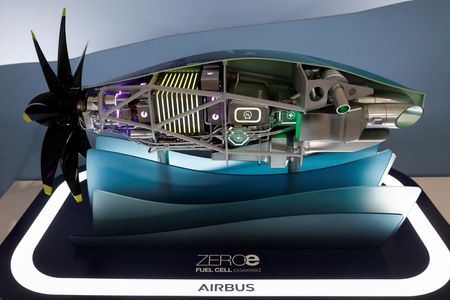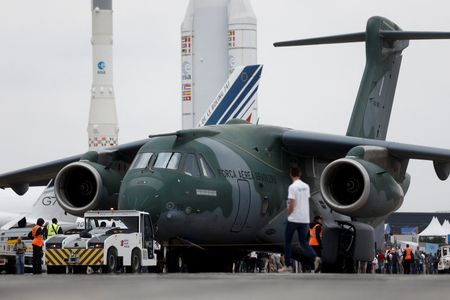By Tim Hepher, Valerie Insinna, Joanna Plucinska and Allison Lampert
PARIS (Reuters) – The first Paris Airshow in four years has clocked up billions of dollars in commercial jet orders and offered some respite for suppliers as air travel springs back sharply from the pandemic.
The industry returned to Le Bourget with high expectations of commercial orders and low expectations regarding the supply chain, but generated a more balanced picture on both fronts.
Announced orders reached near-record levels but were heavily dominated by two airlines leading the charge in India, the world’s fastest growing market: IndiGo and Air India.
Airbus and Boeing collectively unveiled orders or commitments for some 1,100 jets, with Airbus at around 830 jets, led by a 500-plane deal with IndiGo.
But these fell short of some market forecasts of 2,000 orders, to the relief of some analysts who noted a less brash and more business-like tone than previous shows, from an industry scarred by its near-collapse during COVID-19.
India’s economic growth and growing middle class have made it the latest frontier for aviation deals worth tens of billions of dollars, though exact prices were not disclosed.
“That market is going to feed a lot of players in our industry, and we’d like to be the first one there for a long time, barring unforeseen events,” Airbus Chief Commercial Officer Christian Scherer said.
FINANCING METHOD
A total of 970 orders from two Indian carriers showed airlines willing to lock in positions for the next decade and manufacturers building a foundation for rising output rates.
The IndiGo deal also highlighted the growing importance of the so-called sale-and-leaseback model, a popular aircraft financing method that requires a constant flow of new jets.
Under such deals, freshly delivered jets are sold by airlines to leasing companies, rented back and then operated for six years or more before being moved on to another operator.
For passengers, it means the fleet is kept young. For airlines it can mean a key source of extra profit on the sale.
Such financing now makes up 34% of all aircraft financing, Airbus said in a presentation to investors on Wednesday.
India’s leasing market is facing some pressure, however, after the bankruptcy of carrier GoFirst sparked a dispute over lessors’ rights. IndiGo Chief Executive Pieter Elbers said he was not concerned about an impact on the wider market.
The latest deals, coming after a number of mainly Boeing orders before the show, left the largest planemakers mostly sold out until the latter part of the decade.
A key focus of the show was how those planes will be produced after the pandemic disrupted supply chains. Another was hiring more workers: to be tackled in a special event on Friday.
As their biennial jamboree wound up under pouring rain on Thursday, delegates also had to absorb news of a strike at a Spirit Aero Systems factory that makes Boeing 737 fuselages. A lengthy stoppage would impact suppliers worldwide.
Several major companies said they had built up more buffer stocks and were seeing signs of improvement in supply chains.
The conflict in Ukraine brought a raft of air defence order announcements and a growing focus on Europe’s patchy growth in defence spending after years of budgets constraints.
For many, the show diverted attention from the plush chalets where planemakers keep count of orders to the crowded supplier halls where more of the industry’s risk now resides.
“It was the most interesting European air show for a decade,” Agency Partners analyst Sash Tusa said.
“The newsflow was much more balanced between defence and civil – and no longer just a counting competition.”
(Reporting by Tim Hepher; Editing by Mark Potter)








